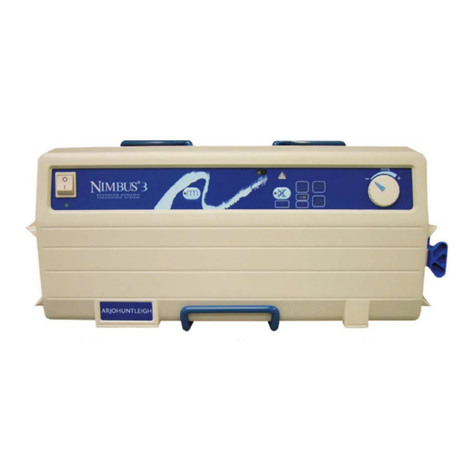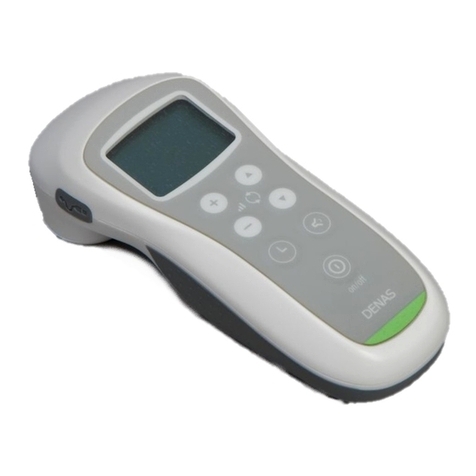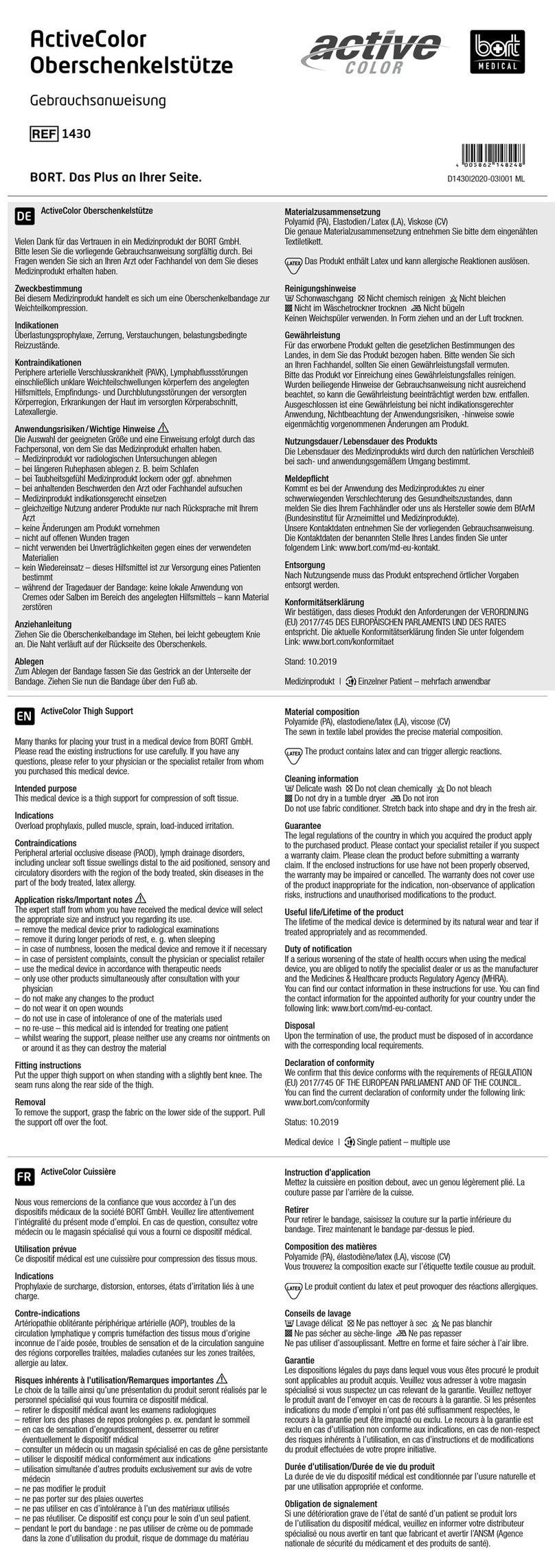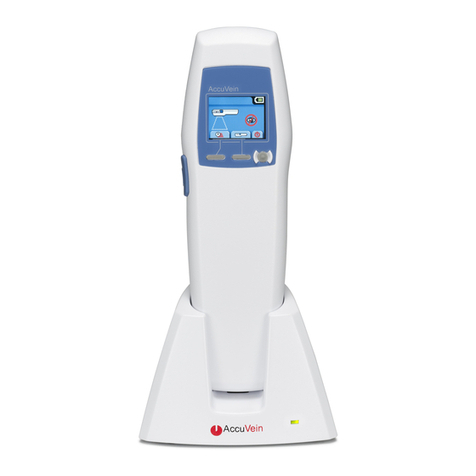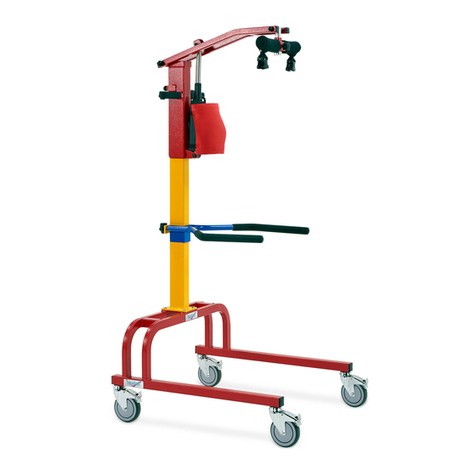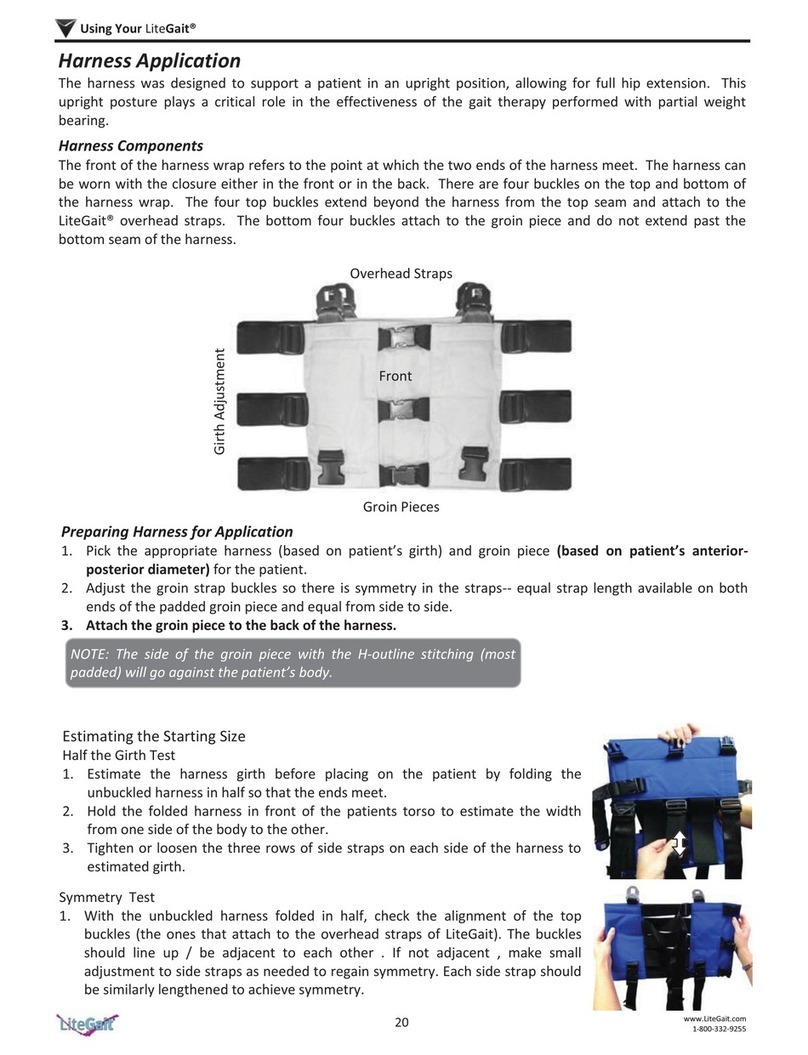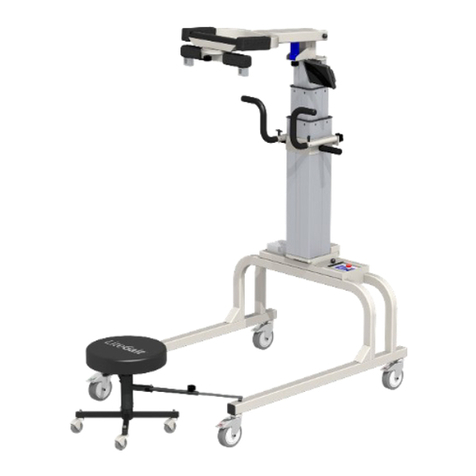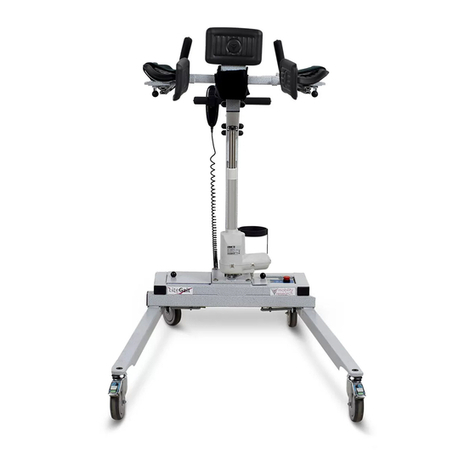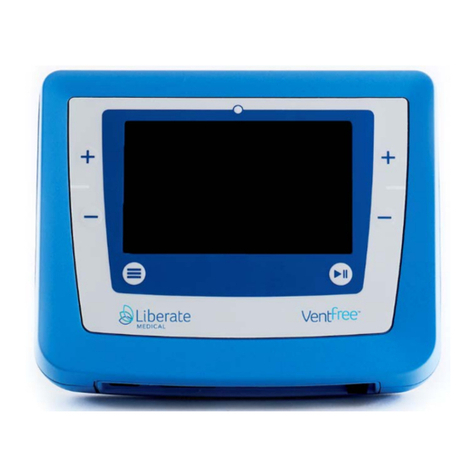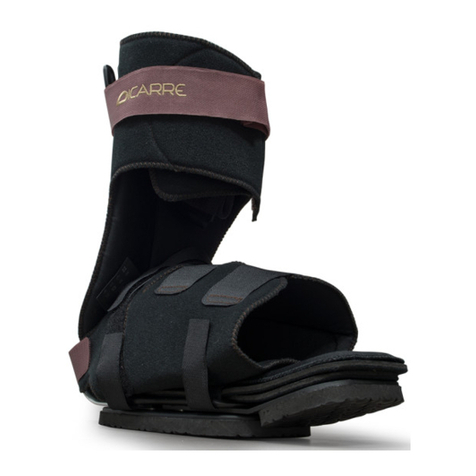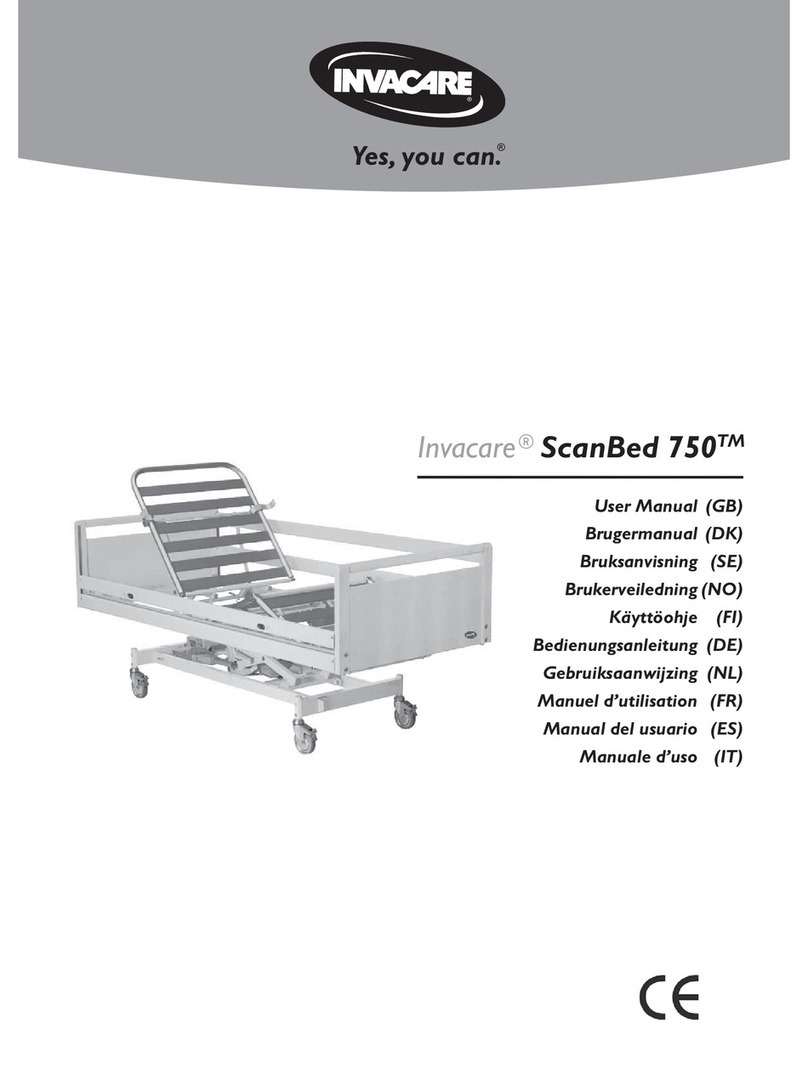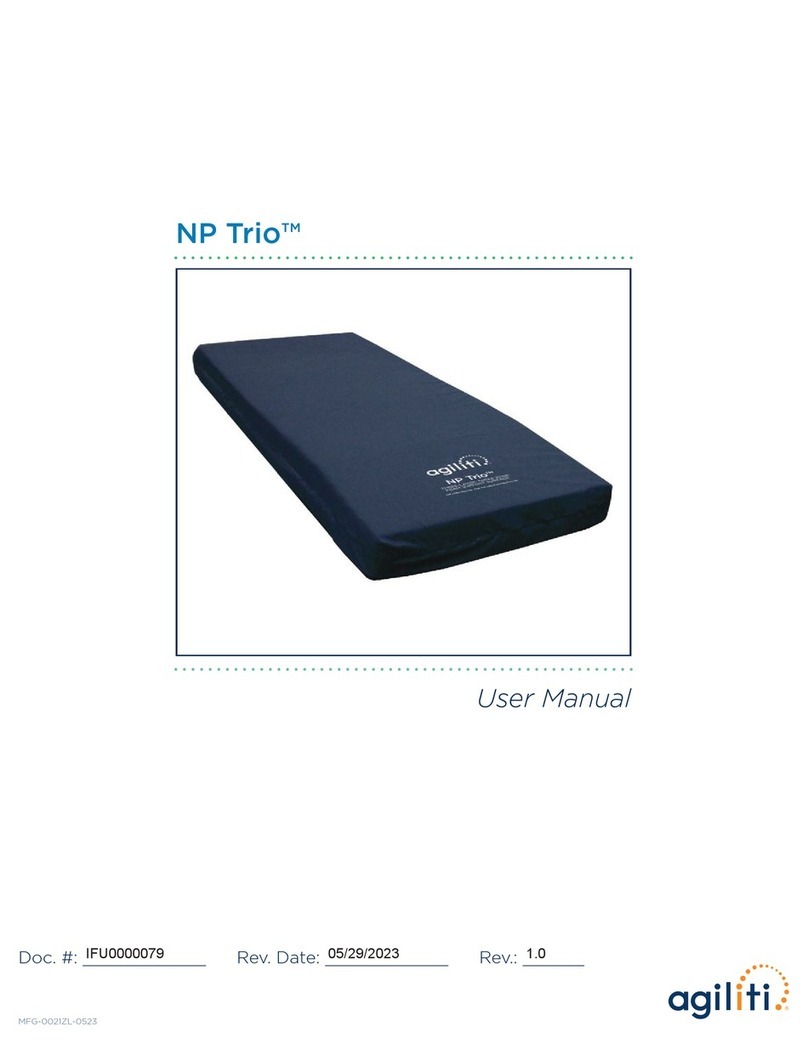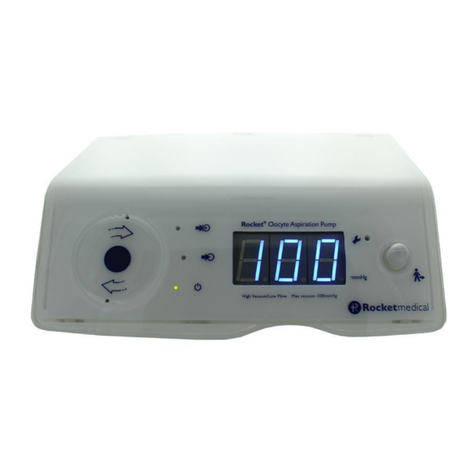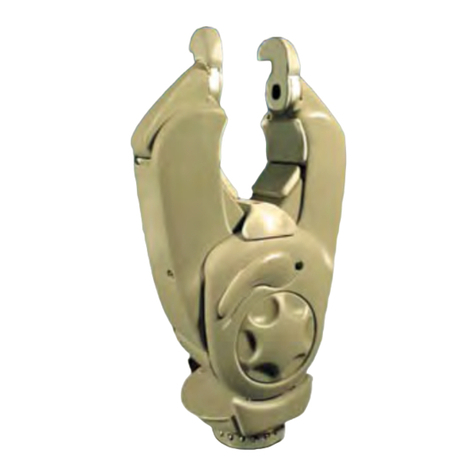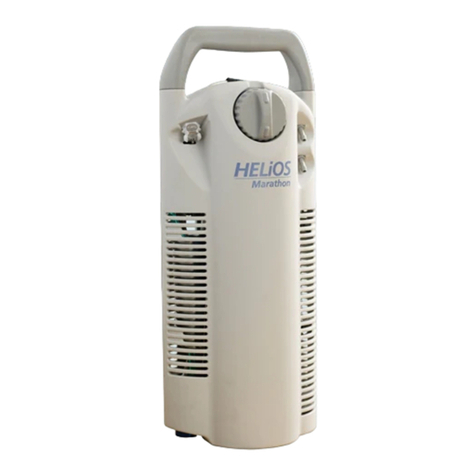
10 www.LiteGait.com
1-800-332-9255
LiteGait® Assembly
Tools Required:
Scissors
1/2 inch socket or open-end wrench
5/16 inch Allen wrench (provided)
LiteGait®Assembly Instructions:
Read below & follow pictures.
NOTE: Two people are required for safe assembly.
NOTE: Your LiteGait® may look different than the follow-
ing images, but assembly Steps are the same.
1.) Inspect shipment and note any
visual damage to box and/or crate
2.) Remove screw located at the
bottom of crate
3.) Lift off exterior box in order to
expose equipment
4.) Examine contents. Report any
damage to equipment immediately
to Mobility Research Technical Sup-
port
6.) Remove cardboard harness and
accessories box.
7.) Open cardboard harness and
accessories box.
8.) Inspect contents of harness and
accessories box for damage.
9.) Carefully cut all black plastic
straps securing base to pallet.
5.) Loosen handle bar knobs and
raise handle bars.
10.) Using both people, remove
base from pallet.
NOTE: If you have any questions during installation,
please contact Mobility Research Technical Support for
assistance.
CAUTION: DO NOT USE UTILITY
KNIFE TO OPEN BOX
NOTE: Your LiteGait® may look different than images above
